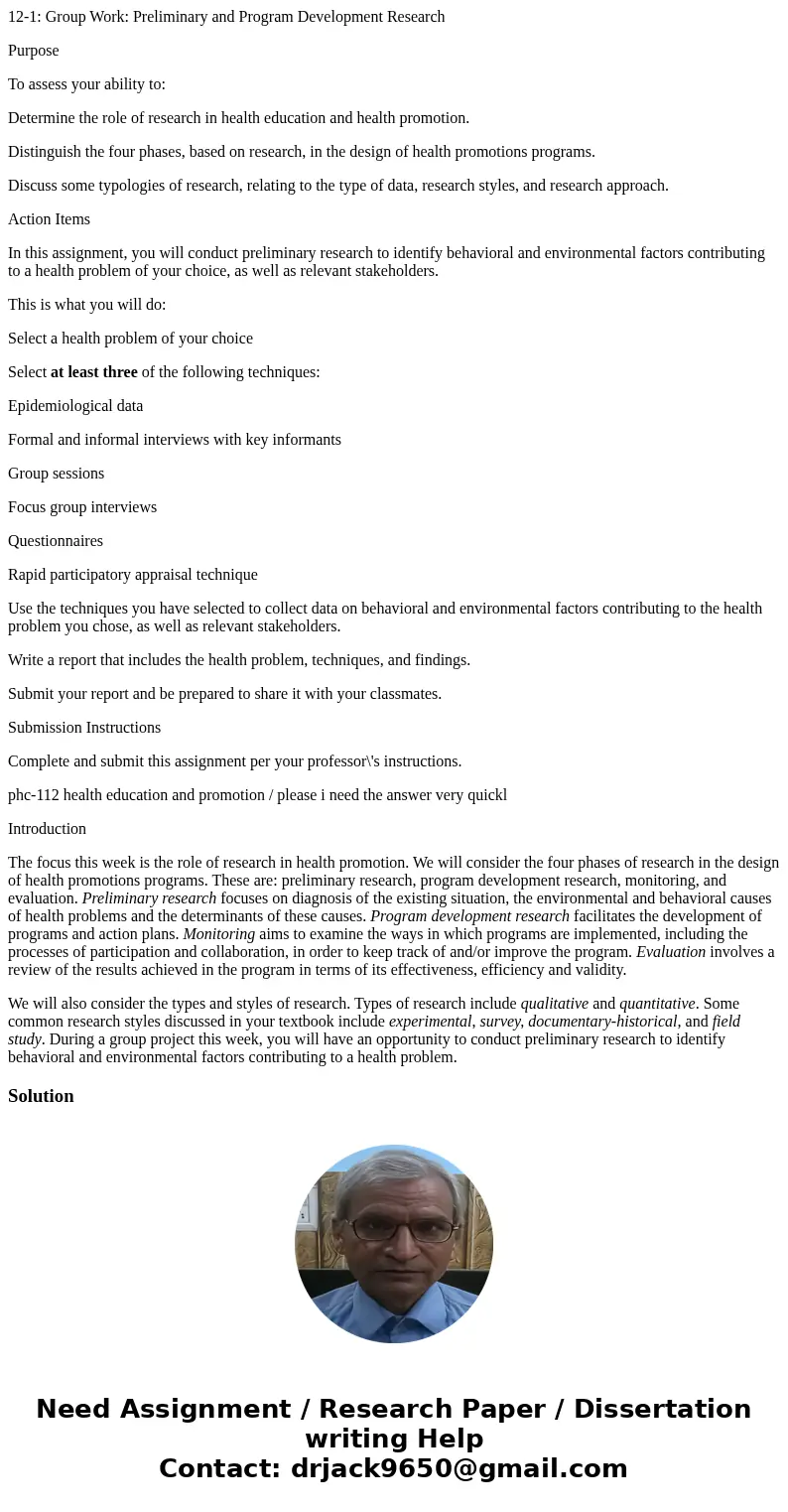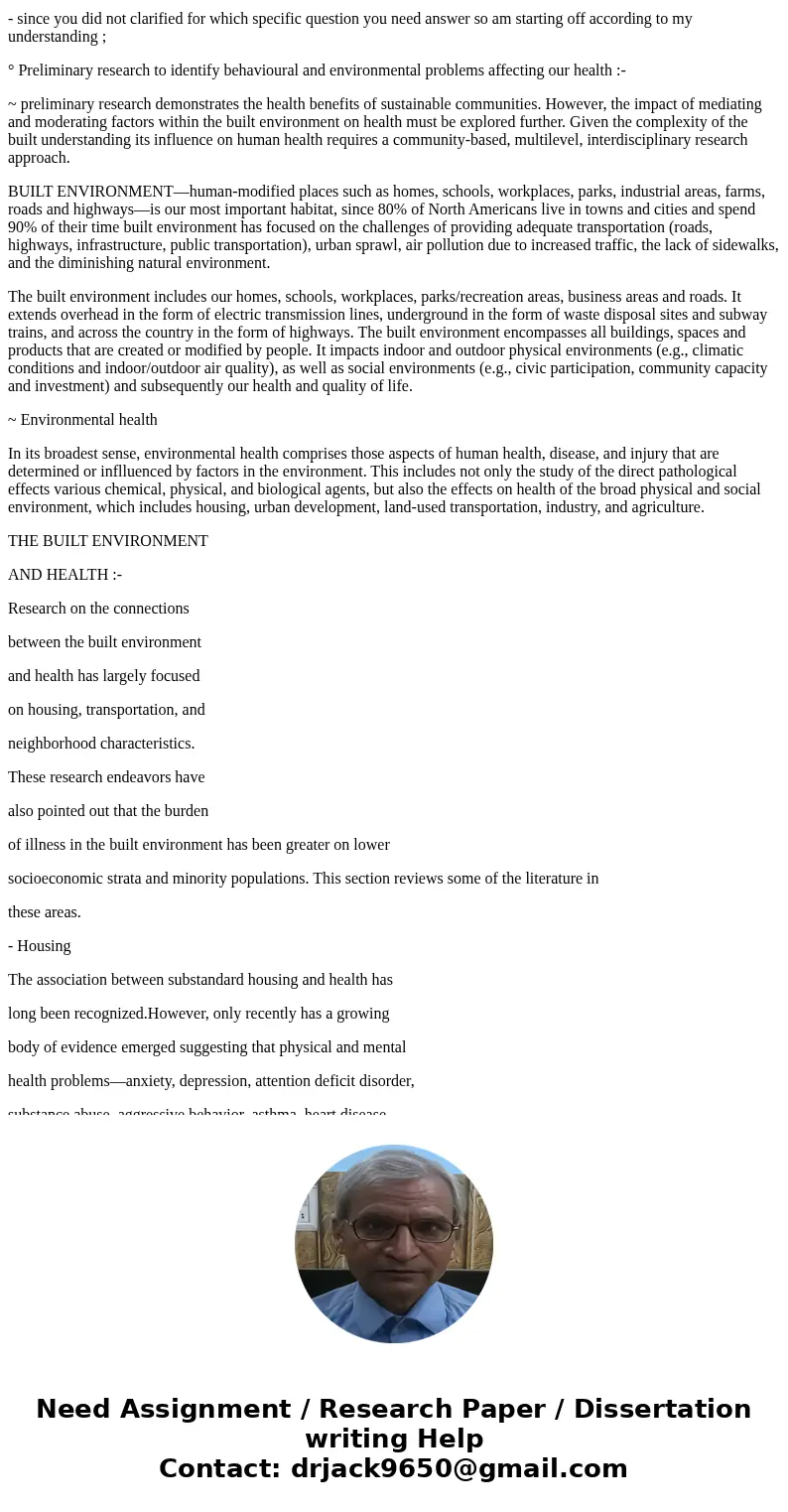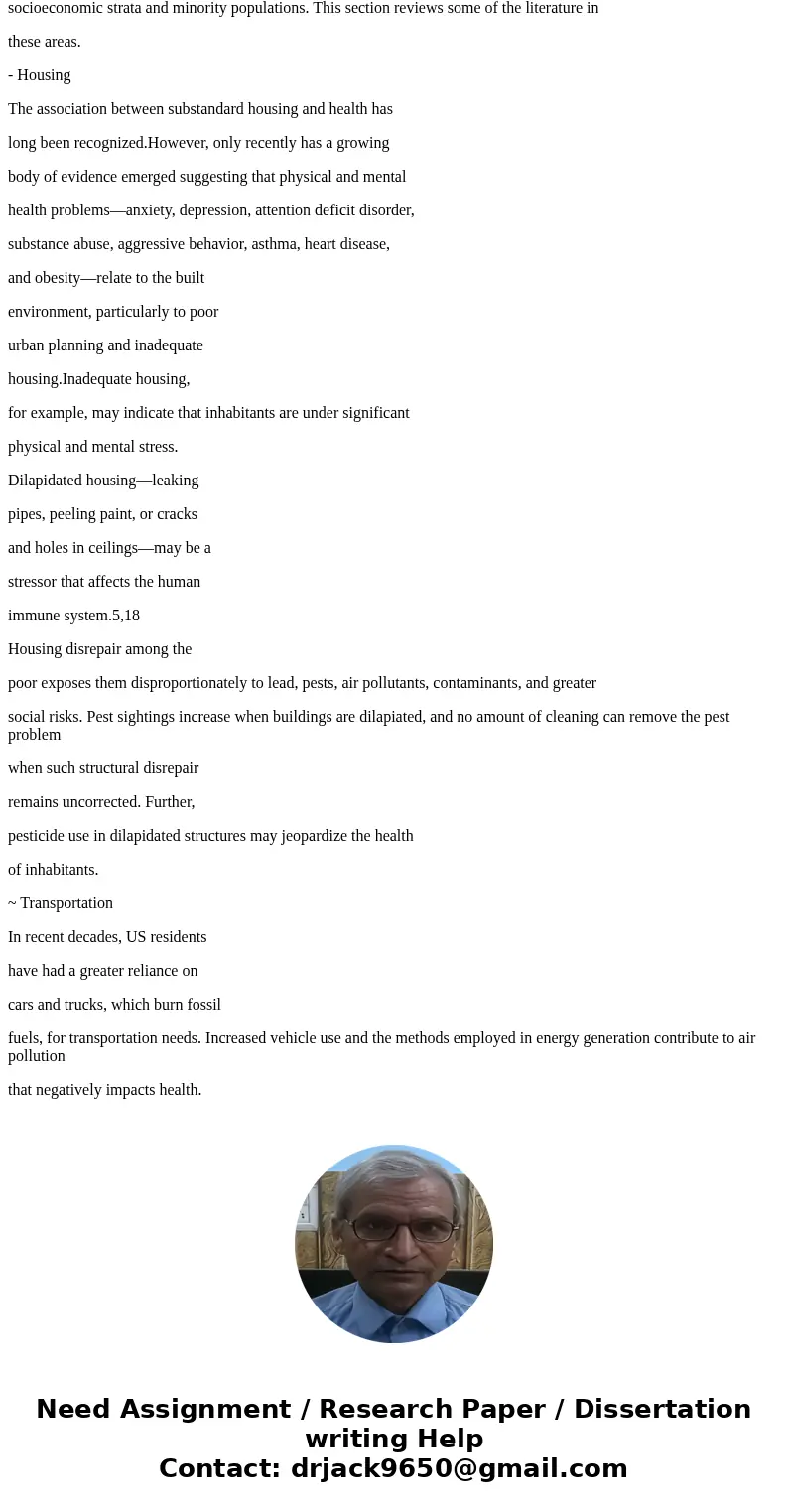121 Group Work Preliminary and Program Development Research
12-1: Group Work: Preliminary and Program Development Research
Purpose
To assess your ability to:
Determine the role of research in health education and health promotion.
Distinguish the four phases, based on research, in the design of health promotions programs.
Discuss some typologies of research, relating to the type of data, research styles, and research approach.
Action Items
In this assignment, you will conduct preliminary research to identify behavioral and environmental factors contributing to a health problem of your choice, as well as relevant stakeholders.
This is what you will do:
Select a health problem of your choice
Select at least three of the following techniques:
Epidemiological data
Formal and informal interviews with key informants
Group sessions
Focus group interviews
Questionnaires
Rapid participatory appraisal technique
Use the techniques you have selected to collect data on behavioral and environmental factors contributing to the health problem you chose, as well as relevant stakeholders.
Write a report that includes the health problem, techniques, and findings.
Submit your report and be prepared to share it with your classmates.
Submission Instructions
Complete and submit this assignment per your professor\'s instructions.
phc-112 health education and promotion / please i need the answer very quickl
Introduction
The focus this week is the role of research in health promotion. We will consider the four phases of research in the design of health promotions programs. These are: preliminary research, program development research, monitoring, and evaluation. Preliminary research focuses on diagnosis of the existing situation, the environmental and behavioral causes of health problems and the determinants of these causes. Program development research facilitates the development of programs and action plans. Monitoring aims to examine the ways in which programs are implemented, including the processes of participation and collaboration, in order to keep track of and/or improve the program. Evaluation involves a review of the results achieved in the program in terms of its effectiveness, efficiency and validity.
We will also consider the types and styles of research. Types of research include qualitative and quantitative. Some common research styles discussed in your textbook include experimental, survey, documentary-historical, and field study. During a group project this week, you will have an opportunity to conduct preliminary research to identify behavioral and environmental factors contributing to a health problem.
Solution
- since you did not clarified for which specific question you need answer so am starting off according to my understanding ;
° Preliminary research to identify behavioural and environmental problems affecting our health :-
~ preliminary research demonstrates the health benefits of sustainable communities. However, the impact of mediating and moderating factors within the built environment on health must be explored further. Given the complexity of the built understanding its influence on human health requires a community-based, multilevel, interdisciplinary research approach.
BUILT ENVIRONMENT—human-modified places such as homes, schools, workplaces, parks, industrial areas, farms, roads and highways—is our most important habitat, since 80% of North Americans live in towns and cities and spend 90% of their time built environment has focused on the challenges of providing adequate transportation (roads, highways, infrastructure, public transportation), urban sprawl, air pollution due to increased traffic, the lack of sidewalks, and the diminishing natural environment.
The built environment includes our homes, schools, workplaces, parks/recreation areas, business areas and roads. It extends overhead in the form of electric transmission lines, underground in the form of waste disposal sites and subway trains, and across the country in the form of highways. The built environment encompasses all buildings, spaces and products that are created or modified by people. It impacts indoor and outdoor physical environments (e.g., climatic conditions and indoor/outdoor air quality), as well as social environments (e.g., civic participation, community capacity and investment) and subsequently our health and quality of life.
~ Environmental health
In its broadest sense, environmental health comprises those aspects of human health, disease, and injury that are determined or inflluenced by factors in the environment. This includes not only the study of the direct pathological effects various chemical, physical, and biological agents, but also the effects on health of the broad physical and social environment, which includes housing, urban development, land-used transportation, industry, and agriculture.
THE BUILT ENVIRONMENT
AND HEALTH :-
Research on the connections
between the built environment
and health has largely focused
on housing, transportation, and
neighborhood characteristics.
These research endeavors have
also pointed out that the burden
of illness in the built environment has been greater on lower
socioeconomic strata and minority populations. This section reviews some of the literature in
these areas.
- Housing
The association between substandard housing and health has
long been recognized.However, only recently has a growing
body of evidence emerged suggesting that physical and mental
health problems—anxiety, depression, attention deficit disorder,
substance abuse, aggressive behavior, asthma, heart disease,
and obesity—relate to the built
environment, particularly to poor
urban planning and inadequate
housing.Inadequate housing,
for example, may indicate that inhabitants are under significant
physical and mental stress.
Dilapidated housing—leaking
pipes, peeling paint, or cracks
and holes in ceilings—may be a
stressor that affects the human
immune system.5,18
Housing disrepair among the
poor exposes them disproportionately to lead, pests, air pollutants, contaminants, and greater
social risks. Pest sightings increase when buildings are dilapiated, and no amount of cleaning can remove the pest problem
when such structural disrepair
remains uncorrected. Further,
pesticide use in dilapidated structures may jeopardize the health
of inhabitants.
~ Transportation
In recent decades, US residents
have had a greater reliance on
cars and trucks, which burn fossil
fuels, for transportation needs. Increased vehicle use and the methods employed in energy generation contribute to air pollution
that negatively impacts health.



 Homework Sourse
Homework Sourse